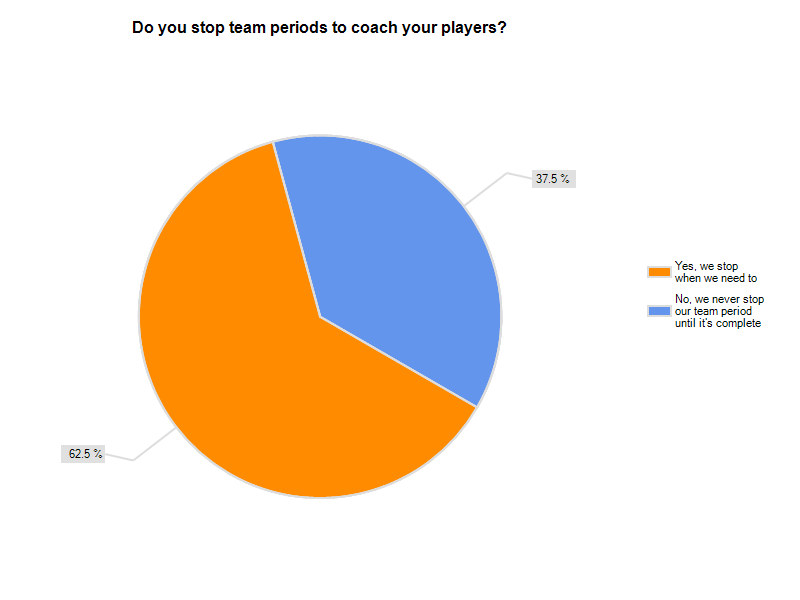By Sam Nichols
Managing Editor
X&O Labs
Twitter: @SNicholsXOLabs
This section of the No Huddle Study will focus on the different changes that can occur as part of implementing a no huddle system. It should be noted that many of the coaches we polled went out of their way to explain that their system of practicing the no huddle has been a journey. Like many things in life, these coaches experienced both pros and cons because of the switch. For most coaches, it has been a long process of discovering exactly how to make this all work best for their team. Fortunately for you, they were willing to share their experiences and resources with us as part of this special report to help coaches avoid some of the trial and error experience that many no huddle pioneers experienced.
Coaches that responded to our survey made one point exceedingly clear: Running the no huddle will change the way your practice forever. At the very least, the simple act of NOT huddling saves a significant amount of time that coaches can use in other ways to benefit their teams. That is only the tip of the iceberg when it comes to the impact of the no huddle on the way coaches run their practices.
So, we segmented our research into providing what we found where several differences in coaching in the no-huddle system.
Difference #1: New Definition of Coaching
Football, more than any other sport, requires all of the coaches on the field to be on the same page. That concept is even more true on no huddle teams that look to maximize the opportunity to change the way they practice. Unfortunately, many no huddle teams run into issues early in the installation process because they don’t properly prepare their coaches for the new way of practicing. The comments we received in our research suggest that coaches will be more successful in preparing their coaches if they focus on initial buy-in and stress “coaching on the run” from the start.
We repeatedly heard from coaches that if one coach isn’t on board with a fast practice, it will not work. That means it is even more important that the head coach and offensive coordinator make the expectations very clear early in the process that they expect everyone to coach in a very specific way. Of course, that is easier said than done, but coaches told us that they have been able to make even the most skeptical coaches fall in line.
Here are some ideas coaches suggested to help get the staff on the same page:
- Involve ALL Coaches In the Process: By bringing everyone into the conversation, the coaches will feel they are choosing to be part of the change as opposed to feeling forced.
- Start With the End In Mind: Instead of starting with the scheme (no huddle), start the conversations with the goals (ex: What are we trying to do? Score more points? Create more possessions?). From there you can set the goals and then work back to how that affects the way each individual coach practices.
- Hold Them Accountable: We all want accountability. Early in the process, coaches are likely to revert back to old practices, and this will happen quickly if not addressed. Maintain early, honest communication with your coaches to help them do what you are asking.
Coaching on the Run:
Perhaps the most important element in creating continuous reps and tempo in practice are the coaches’ willingness to “coach on the run.” No huddle “gurus” will tell you that if you ever stop practice for any reason you are costing your team reps. These experts suggest that coaching on the run is essential for a no huddle team to be successful.
The problem is that this idea is very difficult for some coaches to implement because it is very different than what they are used to. One coach shared that, “some of our older coaches had to get used to coaching on the fly because they were used to an hour of team time and running a play and talking about it for 5 minutes.”
Now this may be an exaggeration, but we all know what he is talking about. The issue is that a team can only practice as fast as its slowest coach so teams must have a clear plan if they are going to try to coach on the run.
Having said that, many coaches do feel it is necessary to stop practice to instruct players if necessary. According to our polling, 60% of coaches said that they do stop team periods to coach their players, a thought that makes other no huddle coaches cringe.
Team Periods:










